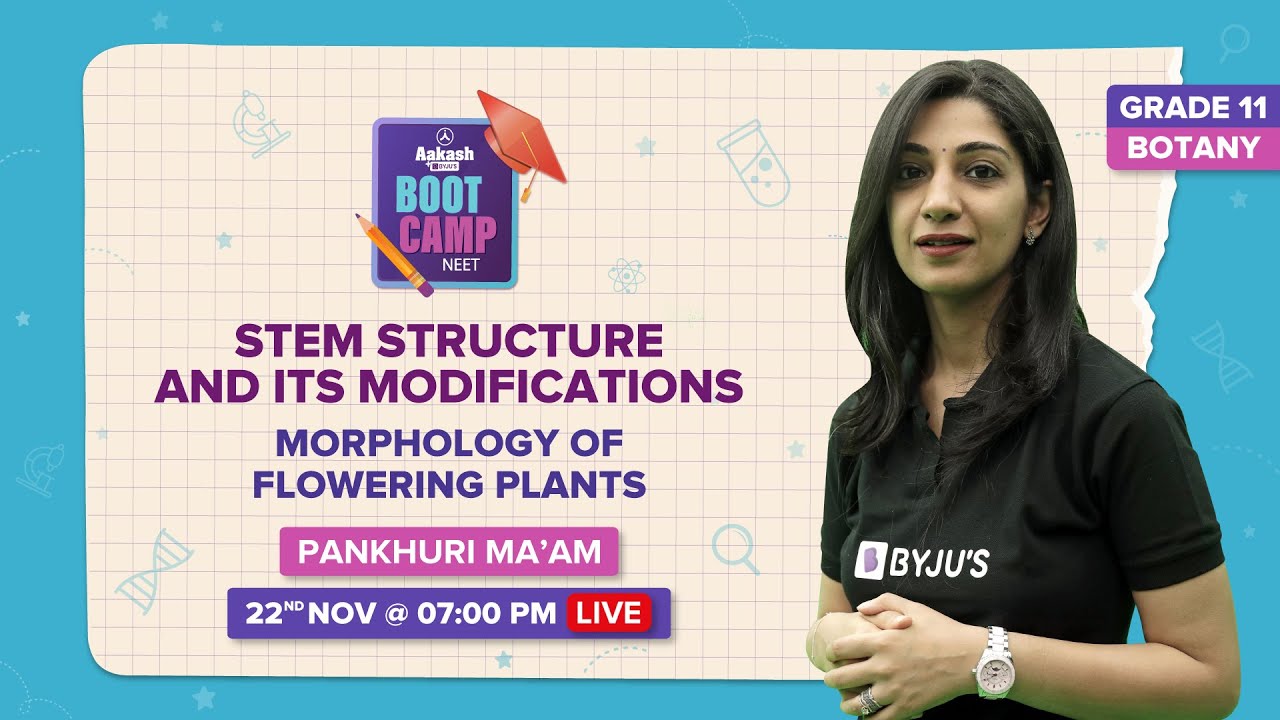Stems
- This plant part lies above the soil surface emerging from the plumule of the embryo, exhibiting growth that is positively phototropic and negatively geotropic
- These structures possess internodes and nodes from which different plant structures develop such as leaves, branches, flower buds, bracts
- Functions –
- Fluid and nutrition transport
- Mechanical support
- Appropriate arrangement of leaves and branches
- Nutrients storage
- Infinite growth
- Production of new organs/tissues
- Stem consists of the following morphologically – nodes, apical and axillary buds, internodes
- They develop from apical meristematic tissue – vegetative cones
Roots
- One of the major vegetative organs of vascular plants that are linked to their substrates are roots, ideally underground
- Found below the soil surface, it emerges from the radical of the embryo
- Exhibit growth that is positively geotropic and negatively phototropic
- They are not differentiated into internodes and nodes
- Functions –
- Water absorption
- Nutrient storage
- Anchoring plants
- Infinite growth
- Vegetative propagation
- Roots can be any of these depending on their origin and development – main root, adventitious roots, lateral roots
Difference Between Stems and Roots
Listed below are some of the important differences between stems and stems
| Characteristics | Stems | Roots |
| What it means | Plant structures bearing shoots and buds with leaves | Part of the vascular plant that is underground typically |
| Primary function | Supply minerals, water and food to all plant parts | Anchor the plant, water and mineral absorption |
| Property of growing towards light – Phototropism | Positively phototropic | Negatively phototropic |
| Property of growing towards soil – Geotropism | Negatively geotropic | Positively geotropic |
| Morphological differences | Bears leaves, flowers and buds | Bears flowers and buds |
| Instead of shoot tip possess a terminal bud | Root cap at the root tip | |
| Can either be unicellular or multicellular, stem hairs – present throughout | Unicellular root hair – at the cluster, behind root cap | |
| At younger stages, typically green in colour | Typically white in younger stages, grows darker | |
| Possess nodes and internodes | Nodes and internodes – absent | |
Root hair –
|
Root hair –
|
|
| Stem branches are exogenous and emerge from axillary buds | Root branches are endogenous, can emerge from any region | |
| Anatomical differences | Epidermal cells cutinized | Epidermal cells are not cutinized |
| Function of epidermis – protection | Function of epidermis – to absorb nutrients and water | |
| Epidermis of young stem has stomata | Stomata absent | |
| Cortex – narrow
Cortex differentiated into – outer, middle and inner cortex |
Cortex – broad
Cortex undifferentiated |
|
| Hypodermis present in an unrecognizable pattern in the endodermis | Hypodermis absent.
Endodermis is distinctly prominent |
|
| Chlorenchyma – present (in outer cortical cells) | Chlorenchyma – absent | |
| Pericycle – multilayered. Important in secondary thickening | Pericycle – uninuclear. Important in secondary thickening | |
| Xylem – endarch | Xylem – exarch | |
| Xylem and phloem fibres – present | Xylem and phloem fibres – absent | |
| Vascular bundles – conjoint and collateral | Vascular tissues – radial | |
| Secondary vascular growth – Present by cambium by both intra and interfascicular | Secondary vascular growth – if present emerges from conjunctive parenchyma and pericycle |
Stems and roots constitute important plant structures forming the root system and shoot system. Explore details on other plant structures, along with their differences, types and much more at BYJU’S.
Recommended Video:

Comments